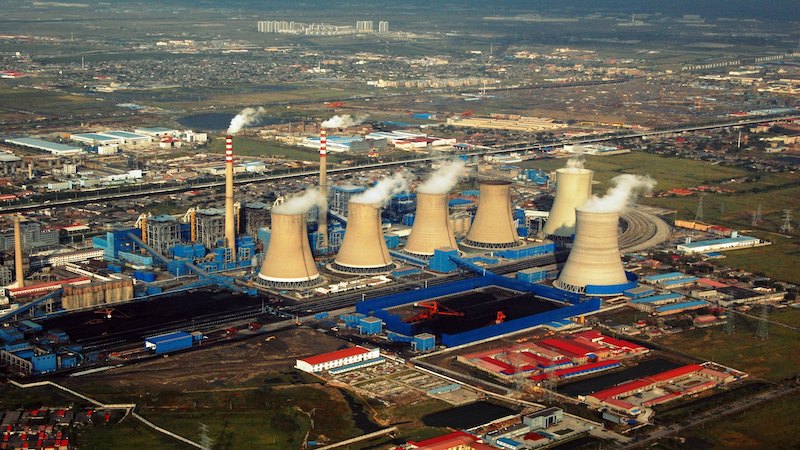A boom in China’s coal power generation is derailing global efforts to limit global heating to 1.5C, analysts have warned.
Concerns were raised because Beijing rapidly accelerated plans for new coal power plants in the second half of last year in a bid to increase its energy security.
According to a report by think-tank E3G, published today, China’s coal project pipeline grew by nearly 50% in the last six months of 2022 taking the total to 250GW. It says developments in China diverge sharply from the rest of the world, where combined coal power plans shrank to 97GW over the same period – the lowest level in modern history.
China is still a global leader in the rollout of renewable energy. The country is adding clean energy projects to the grid almost as fast as the rest of the world combined.
But Leo Roberts from E3G’s coal transition programme believes China’s coal expansion is a “direct threat” to the Paris Agreement goal.
Increasing scale of the challenge
In 2015, nations agreed to pursue efforts to limit global temperature increase to 1.5°C above pre-industrial levels. Crossing that threshold would make climate impacts increasingly harmful to people and the entire planet.
The International Energy Agency (IEA) says no new unabated coal-fired power stations can be built if the world wants to reach that goal.
“Every new coal power station that comes online increases the scale of the challenge to decarbonise the global economy,” Roberts told Climate Home News. “China’s coal boom is actually undermining significant progress away from coal in all other parts of the world.”
The rapid expansion of China’s coal power plans comes as Beijing seeks to strengthen its energy security. Geopolitical tensions affecting global energy prices and domestic supply issues have made policymakers reconsider previous intentions.
After blackouts, China’s green goals take back seat to energy security
At a climate summit in April 2021, China’s president Xi Jinping vowed the country would “strictly control coal-fired power generation projects, and strictly limit the increase in coal consumption”.
At the time his words mirrored the central government’s successful attempts to curb new coal projects. E3G analysis shows that new coal power proposals in China collapsed by 75% between 2015 and July 2022.
China’s rapid U-turn
The recent coal boom has reversed this trend and China is now a clear international outlier. It currently accounts for 72% of total global planned coal capacity, with India, Turkey and Indonesia following far behind.
The aim of China’s coal push is to prevent a repeat of the power outages that affected homes and industries last year. Heatwaves increased electricity demand for cooling, while drying up water reservoirs necessary for hydropower generation in the country’s southwestern provinces.
Meteorological agencies predict another round of record high temperatures and more droughts this year.
Preventing power outages
Many of the new coal-fired power plants are expected to meet peak summer demand driven by energy-hungry air conditioners, which last year resulted in the highest recorded momentary load.
Lauri Myllyvirta, a lead analyst at the Centre for Research on Energy and Clean Air (CREA), says solar energy is able to tackle daytime power needs, but meeting night-time peak demand requires a more nuanced approach.
Still, he believes betting on coal is a suboptimal and costly strategy. “Building coal power capacity to cover peak demand just some days or weeks per year is very expensive. There is still a lot of potential to deal with peak loads with better grid management."
E3G’s Roberts said it looks as if the Chinese government’s claim that it is new building coal capacity to support peak demand is being used as a cover to push through projects. “The reality is that most of the permits handed to new coal power stations would allow them to provide baseload power, which slows down the transition from coal-to-clean."
